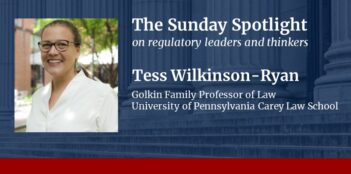
Practitioners and scholars navigate the evolving challenges posed by donor-advised funds.
Donor-advised funds (DAFs) held nearly $230 billion in assets and distributed around $52 billion to charities as of 2022. According to the National Philanthropic Trust, DAFs have increased by 400 percent over the last decade.
A donor-advised fund is a philanthropic vehicle established and funded by donors who make tax-deductible contributions to a charitable sponsor. These contributions are placed in a private account, which is administered by the sponsor, allowing donors to retain advisory privileges over how the funds are distributed.
DAFs have been part of the American philanthropic landscape since the 1930s. Over the past few years, DAFs have become a popular choice for philanthropic giving due to their flexibility and tax benefits. In the United States, the tax code allows donors to receive an immediate tax benefit for donations to DAFs without requiring an immediate distribution of those funds to charities. This has led to billions of dollars being held in DAFs, sparking accusations that the process undermines the intended charitable impact.
The U.S. Congress enacted the Pension Protection Act in 2006, which revised the provision in the Internal Revenue Code that governs DAFs. This legislation represented the first comprehensive regulation of DAFs and was pivotal in defining the funds’ framework and establishing legal guidelines for their operation. Recent legislative proposals have sought to address critics’ concerns about the indefinite warehousing of charitable funds in DAFs. For example, the Accelerating Charitable Efforts (ACE) Act, introduced in 2021, aims to reform the current laws by encouraging more timely distributions.
The ACE Act would create two types of DAFs: one that would require funds to be distributed within 15 years and another that would offer immediate tax benefits for funds distributed within 50 years. With these changes, the Act’s sponsors intend to strike a balance between the flexibility that DAFs offer and the need for funds to reach charities promptly, thereby enhancing the transparency and impact of charitable giving.
Proponents of DAFs argue that these funds encourage long-term, strategic giving. They allow donors to amass larger sums over time, which can potentially fund substantial projects or respond to crises. Furthermore, DAFs provide a way for individuals to engage in philanthropy without having to set up a private foundation, which is more costly and administratively burdensome.
Advocates for reform are pushing for more stringent regulations. They express concern that donors are storing money in DAFs indefinitely, which delays the funds reaching charities. DAF critics also identify a lack of transparency and accountability in how funds are distributed. Proposals for reform include imposing minimum annual distribution requirements, similar to those required of private foundations, and requiring enhanced reporting on the flow of funds to ensure they are being used for their intended charitable purposes.
In November 2023, the U.S. Department of the Treasury and the Internal Revenue Service released a proposed regulation related to DAFs, aimed at increasing transparency and preventing foundations from using DAFs to circumvent payout requirements. As the use of DAFs continues to grow, calls to regulate these funds are increasing.
In this week’s Saturday Seminar, practitioners and scholars explore current legislative proposals to regulate donor-advised funds.
- In an article in Nonprofit Policy Reform, Susan D. Phillips and Keith Sjögren of Carleton University and practitioner Katherine Dalziel examine the impact of different regulatory approaches on DAFs in Australia, the United States, and Canada. Phillips and her coauthors find that Australia’s lack of capital gains exemptions on donations and mandatory pooling of DAF assets hinder the funds’ growth. On the other hand, U.S. and Canadian regulations’ alignment with donor interests—including an emphasis on tax savings through DAFs—may hinder beneficial policy reforms, they explain. Phillips and her team suggest that regulators in each country enact measures to increase transparency of assets and payouts, address potential conflicts of interest, and control excessive fees.
- Regulators should stop private foundations from using DAFs as tax loopholes, practitioner Kerry Gibbons argues in a note in the Minnesota Law Review. Gibbons observes that while private foundations are subject to minimum payout requirements and grantmaking oversight by the Internal Revenue Service, DAFs are not. She warns that private foundations are increasingly avoiding these requirements by donating to DAFs, leading to “warehoused” wealth. Gibbons proposes both federal and state reforms. At the federal level, she urges policymakers to explicitly ban private foundations from using DAFs to avoid payout requirements. At the state level, she calls on legislatures to give state attorneys general more oversight power over private foundation grantmaking.
- To evaluate DAFs’ delays in distributing funds to charitable organizations and guide reforms, an intergenerational justice framework should be adopted, argues Ian Murray of the University of Western Australia in an article in the Nonprofit Policy Forum. After assessing procedures in five countries, Murray suggests that this approach would impose obligations on decision-makers to consider intergenerational justice when deciding how much to spend or retain, rather than strictly adhering to private foundation payout rates or legal time limits. Murray also recommends procedural reforms, such as developing oversight and distribution protocols, as well as enhancing the responsiveness and flexibility of DAFs to meet current and future needs.
- In an article in The Foundation Review, practitioner Sam Marks of FJC: A Foundation of Philanthropic Funds examines the role of DAFs in impact investing from a practical perspective. Although Marks contends that DAF accounts lack mandatory minimum annual payout requirements, he argues that, collectively, DAFs distribute funds to nonprofits at a higher rate than private foundations. Marks encourages legal reforms that center on more impactful investing by DAFs and stresses the importance of educating DAF sponsors about the mechanisms and potential of impact investments. Marks recommends a more flexible and autonomous approach for DAF sponsors, which includes greater oversight and strategic grant-making aligned with principles of intergenerational justice.
- In a new working paper, Helen Flannery of the Institute for Policy Studies and Brian Mittendorf of Ohio State University seek to better understand when donor interests take priority over mission outcomes. Flannery and Mittendorf note that DAFs are a “substantial part” of charitable giving in the United States. The authors observe that DAFs, although housed within public charities, are frequently characterized as de facto private foundations because of the deference sponsors often give to donors’ requests. To better understand the effects of donor influence, the authors formulate the “Emphasis Measure,” which analyzes the language that DAF sponsors use on their websites to understand the degree to which they prioritize mission outcomes over donor interests.
- In a recent article in the Columbia Journal of Tax Law, David I. Walker of Boston University School of Law addresses the cost of DAF-facilitated bunching by advocating reforms targeting charitable giving deductions. Walker observes that new DAF accounts “skyrocketed” after the 2017 Tax Cuts and Jobs Act. He attributes much of this growth to taxpayers seeking to maximize their total tax deduction by “bunching” years of philanthropy into a single year. Walker contends that DAF-facilitated bunching imposes a “great cumulative cost” on the public that incremental charitable giving fails to offset. To remedy this issue, he proposes limiting tax deductions for charitable contributions to appreciated property. Walker also advocates amending current tax subsidies for charitable giving, which he deems inequitable and inefficient.
The Saturday Seminar is a weekly feature that aims to put into written form the kind of content that would be conveyed in a live seminar involving regulatory experts. Each week, The Regulatory Review publishes a brief overview of a selected regulatory topic and then distills recent research and scholarly writing on that topic.



